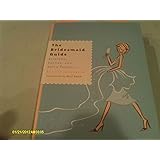The beautiful melody above, with its evocative lyrics, perfectly encapsulates the heartwarming anticipation and joy that heralds one of India’s grandest festivals. It sings of the gentle sway of Kashful, the sweet fragrance of Shiuli, and the rhythmic beat of the ‘dhak’ – all unmistakable signs that Maa Durga is on her way. For millions, especially in Bengal, these natural cues are more than just seasonal changes; they are the very essence of ‘Agomoni,’ the divine arrival of the Goddess.
This vibrant song captures the collective heartbeat of a community eagerly counting down the days until they can declare, “Durga Elo! Durga Elo!” – Durga has arrived! The spirit of Durga Puja is deeply woven into the fabric of Bengali culture, transforming entire cities and villages into a spectacle of devotion, artistry, and communal celebration. It’s a time when homes are adorned, spirits are lifted, and the air hums with an unparalleled energy, all dedicated to honoring the powerful feminine energy embodied by Maa Durga.
The Call of Agomoni: Nature’s Herald for Durga Puja
As the melodious strains of the song remind us, the approach of Durga Puja is intimately connected with the subtle yet profound shifts in nature. One of the most iconic symbols is the ‘Kashful,’ tall, feathery white reeds that bloom across fields, signifying the transition from monsoon to autumn. Their gentle dance in the breeze paints a picturesque landscape, serving as a visual reminder that the festival of Maa Durga is just around the corner, bringing with it a sense of purity and new beginnings.
Equally cherished is the delicate ‘Shiuli’ flower, also known as night-flowering jasmine, which blankets the ground with its fragrant white petals and vibrant orange stems at dawn. The sweet, intoxicating aroma of Shiuli fills the morning air, adding another sensory layer to the ‘Agomoni’ experience. These natural phenomena, far from being mere botanical occurrences, become cherished harbingers, deeply ingrained in the cultural consciousness as signals for the great autumnal festival. They create an atmospheric anticipation that builds into a crescendo of excitement, culminating in the festive days of Durga Puja.
The Dhak: Rhythmic Heartbeat of the Celebration
No description of Durga Puja would be complete without mentioning the iconic ‘dhak,’ the large, barrel-shaped drum whose rhythmic beats resonate through every pandal and street. The song beautifully references the moment when the ‘dhak’ will give its call, stirring souls and igniting the festive fervor. Expert dhakis, drummers who have often inherited their skill through generations, travel far and wide to participate, their powerful performances creating the indispensable soundtrack to the festivities.
The varied cadences of the dhak not only accompany the traditional dances and rituals but also symbolize the vibrant energy and jubilant mood of the entire community. It is a sound that evokes deep emotions, instantly transporting Bengalis worldwide back to the bustling streets and bright lights of their hometowns during this special time. The continuous, thunderous beat of the dhak is a fundamental part of the Durga Puja experience, amplifying the spiritual and cultural celebration with every powerful rhythm.
Maa Durga: Embodiment of Naari Shakti and Divine Power
At the heart of Durga Puja lies the reverence for Maa Durga, an embodiment of divine feminine power, or ‘Naari Shakti.’ She is depicted as a fierce warrior goddess, riding a lion or tiger, armed with multiple weapons in her ten hands, each gifted by a different deity. Her primary purpose is to protect the righteous and destroy evil, most notably vanquishing the buffalo demon Mahishasura, symbolizing the triumph of good over malevolence and order over chaos. This epic narrative forms the core mythology of the festival, inspiring devotees with her unwavering strength and courage.
Durga is not merely a destroyer of evil; she is also the compassionate Mother, a protector, and the giver of prosperity and wisdom. Her various forms, each with unique attributes and stories, collectively represent the multifaceted nature of the divine feminine. During Durga Puja, she is worshipped in all her grandeur, reminding everyone of the inherent power and resilience within women, making the festival a profound tribute to womanhood and its indomitable spirit.
The Significance of Her Arrival: Beyond Mythology
The phrase “Durga has arrived” extends beyond the mythological narrative; it signifies the arrival of hope, joy, and collective renewal. Her presence is believed to purify the surroundings, dispel negativity, and usher in an era of peace and prosperity. The meticulous craftsmanship of her idols, often adorned with exquisite clothing and jewelry, reflects the deep devotion and artistic expression of the community. Each detail, from her serene yet powerful expression to the arrangement of her weapons, carries symbolic weight, conveying profound spiritual lessons.
The celebration of Maa Durga during this autumnal festival is therefore a deeply spiritual journey that culminates in a joyous social gathering. It is a time when families reunite, friends bond, and communities come together to celebrate not just a deity, but the enduring values of courage, righteousness, and the eternal victory of good. The festivities provide a much-needed respite from daily routines, offering a chance for collective introspection and vibrant communal expression, reinforcing cultural identity and shared heritage in the most beautiful way.
The Grandeur of Durga Puja: A Cultural Phenomenon
Durga Puja is much more than a religious observance; it is a colossal cultural carnival that transforms cities like Kolkata into open-air art galleries and vibrant social hubs. Elaborate ‘pandals’ (temporary artistic structures) are erected, often showcasing breathtaking themes, intricate designs, and innovative lighting displays that attract millions of visitors. These pandals are not just shelters for the idols; they are creative expressions, often reflecting contemporary social issues or celebrating traditional artistry, making them true spectacles of ingenuity and craftsmanship.
Throughout the five principal days of the festival, from Shashthi to Dashami, the air is thick with excitement. People engage in ‘pandal hopping,’ enjoying delicious street food, cultural performances, and the joyous camaraderie of friends and family. New clothes are donned, traditional music fills the air, and every street corner pulses with life. This communal festivity fosters a strong sense of belonging, transcending social barriers and bringing everyone together in a shared celebration of culture and devotion.
Rituals and Traditions: Connecting with the Divine
The rituals performed during Durga Puja are rich in symbolism and deeply rooted in ancient traditions. Each morning, devotees offer ‘anjali,’ flowers and prayers, seeking Maa Durga’s blessings for well-being and prosperity. The ‘sandhi puja,’ performed at the cusp of Ashtami and Navami, is considered a highly auspicious moment, honoring Maa Durga in her Chamunda form and marking the most intense period of worship. This particular ritual emphasizes the continuous cycle of creation and destruction, a core tenet of Hindu philosophy, and reinforces the idea of constant vigilance against evil.
The vibrant ‘Dhunuchi Naach,’ an energetic dance performed with incense burners, is another captivating tradition, showcasing the profound devotion and artistic expression of the participants. As the festival draws to a close on Dashami, married women engage in ‘Sindoor Khela,’ smearing vermillion on each other and the idol of Maa Durga, symbolizing fertility, marital bliss, and bidding a tearful farewell to the Goddess as she returns to her heavenly abode. This emotional ritual highlights the cyclical nature of life and faith, setting the stage for her return the following year, perpetuating the spirit of Durga Puja.
Your Questions on Maa Durga, the Symbol of Naari Shakti
What is Durga Puja?
Durga Puja is a grand Indian festival, especially important in Bengali culture, that celebrates the divine feminine power of Goddess Durga. It’s a time of devotion, artistry, and communal celebration.
Who is Maa Durga?
Maa Durga is a Hindu goddess who represents divine feminine power, also known as ‘Naari Shakti.’ She is a fierce warrior goddess worshipped for protecting good and destroying evil.
How do people know Durga Puja is approaching?
People know Durga Puja is approaching by natural signs like the blooming of ‘Kashful’ reeds and the fragrant ‘Shiuli’ flowers, along with the rhythmic beats of the ‘dhak’ drums.
What is a ‘dhak’?
A ‘dhak’ is a large, barrel-shaped drum whose rhythmic beats are an essential part of the Durga Puja celebrations. Its sound creates the festive atmosphere and excites the community.
What are ‘pandals’ during the festival?
‘Pandals’ are elaborate, temporary artistic structures set up during Durga Puja that serve as shelters for the idols. They are often open-air art galleries showcasing creative designs and themes.











